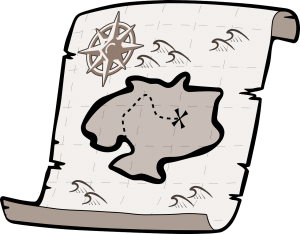 The Reading Lab has modules covering over two dozen topics. It is divided into three sections: what to do before reading, what to do while reading, and what to do after reading. These sections are divided into nine units that cover one or more topics. Below is a map of the Reading Lab with a description of each topic to help you find the resource that’s best for you. Each topic consists of a module with an instructional video, one or more interactive exercises, handouts, and links to additional resources online.
The Reading Lab has modules covering over two dozen topics. It is divided into three sections: what to do before reading, what to do while reading, and what to do after reading. These sections are divided into nine units that cover one or more topics. Below is a map of the Reading Lab with a description of each topic to help you find the resource that’s best for you. Each topic consists of a module with an instructional video, one or more interactive exercises, handouts, and links to additional resources online.
What to Do Before Reading
Previewing: Learn how to preview a text in order to familiarize yourself with its contents before you read. This will help you understand the material better and use your time more efficiently.
Questioning: Learn how to ask questions about a text before, during, and after reading to improve your understanding of the text. Topics covered include using questioning to examine your purpose, expectations, attitude, and understanding of the topic; writing guide questions; using questioning to monitor your understanding as you read; and using questioning to evaluate what you’ve read.
What to Do While Reading
Annotating: Learn how to engage texts by annotating while you read.
- Annotating: Creating an Annotating System: Annotating while you read is the most fundamental technique of active reading. Learn how to annotate a text by watching this video.
- Annotating an Essay or Book: Learn what to look for when annotating an essay or book.
- Annotating a Textbook: Learn how to identify and annotate the key parts of a textbook.
- Annotating a Journal Article: Learn about the different types of academic journal articles and how to annotate them.
- Annotating a Work of Fiction: Learn about how to read and annotate a work of fiction, such as a short story or novel.
- Annotating: How to Read Visual Aids: Learn how to read visual aids.
Inferencing: Learn how to read between the lines to identify what a text is implying rather than directly stating.
Vocabulary Strategies: Learn about techniques and tools to help you improve your reading vocabulary.
- Context Clues: Learn what context clues are and how to use them to decipher the meaning of unfamiliar words you come across while reading.
- Word-Part Clues: Learn what word parts are and how to use them to discover the meaning of unfamiliar words you come across while reading.
- Specialized Terminology: Learn how to identify and acquire specialized terminology for specific subjects and disciplines.
- Figurative Language: Learn the difference between literal and figurative language, and how to interpret different types of figurative language you may encounter as you read.
- Creating Vocabulary Flashcards: Learn how to build your reading vocabulary by making vocabulary flashcards.
- Creating a KIM Chart: Learn how to build your reading vocabulary by making a KIM Chart (key word, information, and memory cue).
- Creating a Word Web: Learn how to build your reading vocabulary by making word webs.
What to Do After Reading
Paraphrasing: Learn how paraphrasing is different from quoting and summarizing, and how to paraphrase what you read so that you can check your understanding of what the author says and improve your memory of it.
Summarizing: Learn how summarizing is different from quoting and paraphrasing, and how to summarize what you read so that you can check your understanding of longer texts and remember the main ideas.
Analyzing: Learn how to read critically by analyzing what you read.
- Writing Patterns: Learn how to identify the patterns used by writers to organize their ideas. This will help you anticipate how a text will develop an idea and improve your own writing.
- Evaluating an Author’s Intent: Learn how to evaluate an author’s intent by reading critically to discern point of view, purpose, intended audience, and tone.
- Evaluating an Argument: Learn how to evaluate the arguments you come across as you read in order to uncover biases and logical fallacies.
- Evaluating a Website: Learn how to evaluate websites for reliability, accuracy, and relevance.
- Creating a Timeline: Learn how to create a timeline to organize and remember the information you gather from the texts you read.
- Creating an Outline: Learn how to make an outline of what you read so that you can understand how ideas are organized and related in the text.
- Creating a Concept Map: Learn how to create a concept map to visualize the main ideas in a text.
- Creating a Story Map: Learn how to make a story map to improve your understanding of narrative-based texts like novels, short stories, and histories.
Synthesizing: Learn how to synthesize what you read by teasing out the main ideas and combining them with other ideas to formulate new perspectives.
